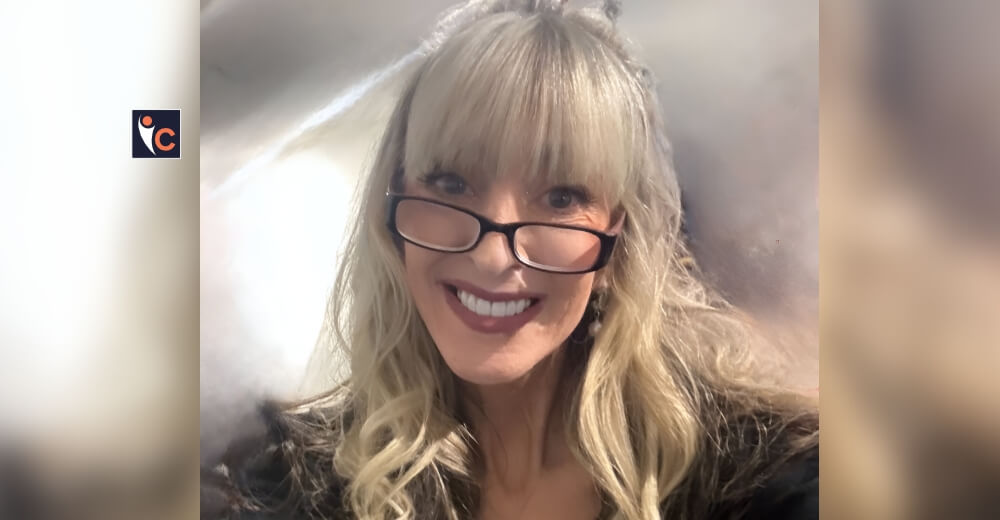Healthcare presents a paradox when it comes to innovation. Although many of the highly innovative discoveries come at a very swift pace, ideas that can transform healthcare occur gradually, over a prolonged period of time. These gradual transformations are also known as ‘Disruptive Innovations’. In this, the existing methods or traditions are improved to increase the quality of care and simultaneously make it affordable by leveraging the existing or up and coming technologies. This allows the whole population to significantly seek the benefits of various healthcare technologies and thereby promoting population health. Looking at the scenario of the health space today, disruptive innovation in healthcare is a significant revolution that the world needs.
A small Biotechnology startup, ClearLight Biotechnologies, LLC, is leading the revolution of a positively disruptive innovation in healthcare. Formerly known as Clearlight Diagnostics, LLC, it was founded in 2014 by Karl Deisseroth, MD, PhD, the inventor of CLARITY, Optogenetics, and STARmap technologies and D.H. Chen, Professor of Bioengineering and Psychiatry & Behavioral Sciences at Stanford University as well as the Investigator of the Howard Hughes Medical Institute.
ClearLight is an early stage company, focused on developing automated instrumentation and associated reagents to simplify and expedite non-destructive 3-Dimensional (3D) tissue analysis to facilitate preclinical and clinical research applications. It is creating a platform that will enable an end-to-end solution for 3D analysis of preclinical and clinical models of disease. It will consist of an automated multi-sample and individualized 3D tissue processor paired with optimized biomarker panels as well as multi-sample imaging and custom 3D image analysis software.
Focus Areas
The current focus of the company is in the area of oncology prognostic and predictive applications. In this, it emphasizes on predictive biomarker applications for immune-oncology T-cell based drugs as well as standard of care (SOC) biomarkers. Neuroscience is another area of interest for ClearLight Biotechnologies. In neuroscience, it emphasizes on the models of Alzheimer’s disease. However, the technology could be easily applied to any biological area that relies on 2D thin-section analysis of a tissue.
The Visionary Leader
Laurie Goodman, Ph.D. is the current CEO and Board Manager of ClearLight Biotechnologies and previously served as the Chief Scientific Officer since 2015 before assuming her new role. Dr. Goodman is a seasoned professional with more than 25 years of experience in innovative technology development, clinical cancer diagnostics, and translational cancer research within the biotechnology industry. She holds a BS degree in Biology with a minor in Chemistry from Arizona State University and a PhD in Cell and Molecular Biology from University of California Berkeley. Following a postdoctoral fellowship at Genentech, she began her career at Lynx Therapeutics (currently Illumina) where she initiated and developed a breast cancer scientific program to validate the company’s next generation sequencing platform. Dr. Goodman is also an author on several key publications and patents related to analytic and clinical cancer biomarkers.
She has worked in broad senior level roles encompassing research and development as well as clinical and medical affairs. Prior to joining ClearLight, Dr. Goodman held the position of Senior Director of Scientific and Medical Affairs for Biodesix, an innovator of blood-based cancer diagnostics. She was instrumental in building and leading the company’s first scientific and medical affairs team, as well as initiating key academic collaborations in the areas of lung and breast cancer. Her other senior level roles include directing the analytic team involved in the CLIA validation and commercialization of Monogram Biosciences’ first oncology diagnostic product, HERmark®.
The Problem in the Already Existing Techniques
Current gold standard techniques, for the analysis of diseased and normal tissues are outdated and around a century old. It relies on the analysis of 2D thin-section formalin fixed paraffin embedded (FFPE) tissue techniques. The spatial analysis of a potentially heterogeneous tissue microenvironment can be highly limited by such techniques, as can the analysis of the tissue morphology. Furthermore, 2D analysis is destructive, slide-based, variable and highly manual, and does not represent the entire biology. Mathematically speaking, a single 5-micron tissue section from a 2 cm3 breast carcinoma is exactly the same as the ratio of a single Manhattan block to all of Manhattan (adapted from a personal communication with Dr. Geoffrey Baird MD PhD). It is not representative of the more comprehensive biology of that tumor and therefore may hinder successful treatment outcomes for patients.
ClearLight’s Ingenious Solution
ClearLight is developing a next generation instrument, reagent and software platform for volumetric tissue processing and 3D image analysis. It is developing this solution by leveraging the revolutionary technology called CLARITY, which is an acronym for Clear Lipid-exchanged Acrylamide-hybridized Rigid Imaging/Immunostaining/In-situ hybridization-compatible Tissue-hYdrogel.
“CLARITY is a novel approach that is innovative in both function and utility, and has been applied broadly to the field of neurobiology, primarily as a qualitative tool,” says Dr. Goodman. The company believes in the technology as it enables the formation of a hydrogel matrix (HM) by crosslinking biological molecules to a 3D network of hydrophilic polymers, followed by lipid removal to generate a transparent and structurally intact tissue. This tissue retains its original structural features, can be labeled with macromolecules, and imaged without destruction of the tissue morphology.
Another advantage of the CLARITY technology, is that it is compatible with previously frozen, fresh, formalin-fixed, and FFPE research and clinical human or rodent tissue. It is non-destructive, and therefore fewer samples are required, thus allowing recapitulation of spatial heterogeneity without laborious sectioning and registering of samples. It is compatible with standard nucleic acid and antibody interrogation techniques. This technique also allows for multiple interrogations of a single sample to increase 3D biomarker information. Importantly, the technology enables the storage of samples indefinitely for future analysis and the microscopic imaging capabilities including confocal, light sheet, and SPIM.
The workflow of this platform is very simple and includes:
- Embedding the tissue in a hydrogel matrix solution;
- Removal of light scattering lipids that impede the ability to image deeply within a tissue;
- Multiplexed interrogation with directly or indirectly fluorescently labeled antibodies or nucleic acids to identify key structural and microenvironment biomarkers and refractive index matching;
- Microscopic imaging of the tissues, using long working distance objectives and either confocal, light sheet, or SPIM;
- 3D image analysis using Artificial Intelligence (AI) and machine learning techniques.
The development program of the company is a combination of external software and hardware engineering contractors, as well as strategic academic and business partnerships.
Team ClearLight
The internal team of ClearLight is comprised of a Director of Operations, two Directors of Research and Development, a Head of Lab Operations along with the CEO. In order to keep costs to a minimum, the company operates primarily with an extensive external network support that handle human resources, IT, accounting & taxes, engineering, animal facility CRO, marketing/website support, and legal works (corporate and IP). It also has key academic collaborations in the area of oncology and neuroscience.
Determined to Revolutionize the Future of Medicine
The mission of ClearLight is to revolutionize the diagnostic, prognostic, and predictive treatment of disease by enabling next generation technologies for non-destructively and digitally analyzing diseased and normal tissues in 3D. It predicts a similar future of this industry as to that of the adoption of next generation sequencing (NGS) into clinical decision making that took more than 20 years and has now become a billion-dollar industry. Dr. Goodman says, “We predict a similar steady trajectory with 3D processing and imaging of diseased tissue being adopted initially into the research use only (RUO) market and eventually entering the clinical market as adoption increases and clinical utility is established.”
Future Business Plans
Reorganization of leadership in recent months, has resulted in changes to several aspects of the company, including a name change to more accurately portray the revised business model of the company and future potential commercialization plan. By the fourth quarter of 2019 or first quarter of 2020, the company will be launching a Research Use Only (RUO) in-house service model along with limited beta platform testing in the field, for 3-4 academic sites. The in-house custom service model will be offered to academic and pharmaceutical customers in any field, like preclinical, clinical drug development, exploratory inclusion in clinical trials; as a means to grow a profitable business over the next five years. These Beta platform studies will allow the company to validate the system and facilitate the generation of key clinical utility data, informing about its future potential.
Following long term adoption of the RUO product by pharma, academics, and CROs, ClearLight has plans to enter the Laboratory-Derived Testing Clinical Market or a Potential FDA-cleared platform/companion diagnostic with potential partners, although the plans for this have not been established at this time. The strategy of the company is to first establish the RUO and potential clinical utility and develop the market for the technology. It foresees this timeline for FDA approval and clinical utility to be similar to NGS technology market adoption.
“With any new disruptive and revolutionary technique, adoption takes time and patience but the rewards are extensive for a company like ClearLight Biotechnologies since it holds exclusive intellectual property rights to develop the CLARITY technology for diagnostic, prognostic, and predictive future clinical applications,” asserts the CEO.















